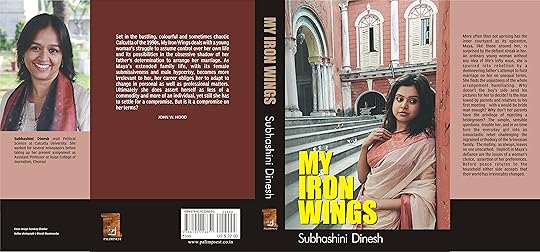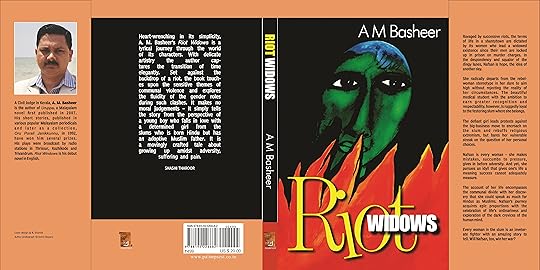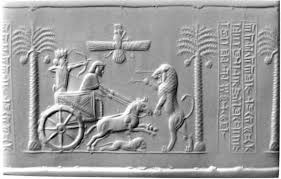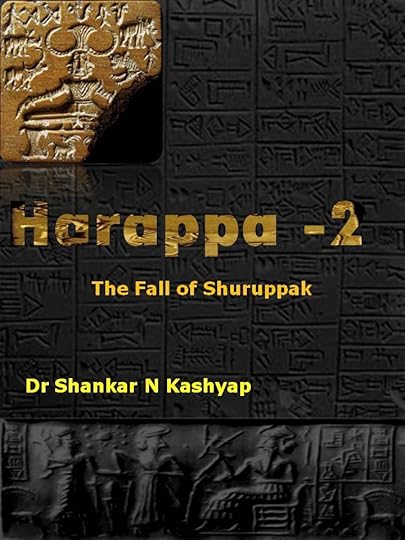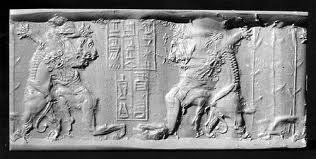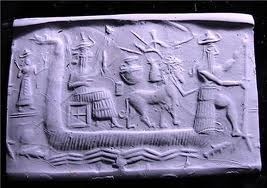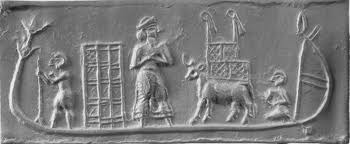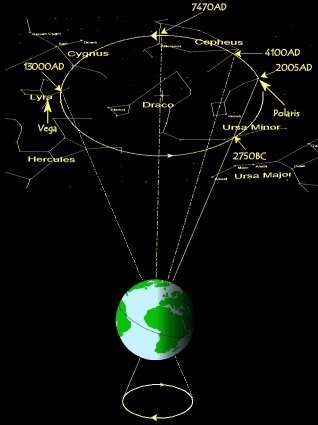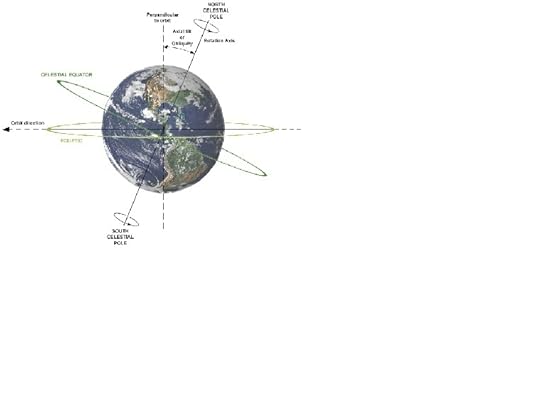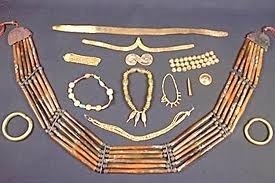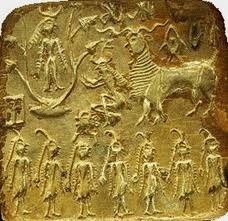Shankar N. Kashyap's Blog, page 3
August 13, 2013
Latest Releases from Palimpsest!!
Here are the latest releases from Palimpsest India. Riot Widows is also available on Amazon at
“My Iron Wings” by Subhashini Dinesh
“Riot Widows” by A M Basheer. Probably a first from a sitting Judge!!
Ravaged by successive riots, the terms of life in a shantytown are dictated by its women who lead a widowed existence since their men are locked up in prison on murder charges. In the despondency and squalor of the dingy lanes, Nafsan is hope, the idea of another day.
She radically departs from the rebel-woman stereotype in her dare to aim high without rejecting the reality of her circumstances. The beautiful medical student with the ambition to earn greater recognition and respectability, however, is ruggedly loyal to the festering slum where she belongs.
The defiant girl leads protests against the big-business move to encroach on the slum and rebuffs religious extremism, but bares her vulnerable streak on the question of her personal choices.
Nafsan is every woman – she makes mistakes, succumbs to pressure, gives in before adversity. And yet, she pursues an idyll that gives one’s life a meaning success cannot adequately measure.
The account of her life encompasses the communal divide with her discovery that she could speak as much for Hindus as Muslims. Nafsan’s journey acquires epic proportions with the celebration of life’s ordinariness and exploration of the dark crevices of the human mind. Every woman in the slum is an inveterate fighter with an amazing story to tell. Will Nafsan, too, win her war?


May 27, 2013
The Fall of Shuruppak.
Great news. The second book of the Harappa series – The Fall of Shuruppak is on its way to the Editors. It has elements of both harappan and Mesopotamian civilisations. Release across the globe hopefully by December 2013 or early 2014. It had been hard work, but I am happy with the finished product. I can relax for a week and start on my next project – the third book of the Harappa series – The Battle of Ten Kings!!


April 25, 2013
Harappa: The Lure of Soma
Still hoping for a September release!!
April 16, 2013
Last words of the Old King
Read my short story in the latest edition of the The Equator Line magazine. It has some excellent articles with the theme being “Undivided India”. There are articles from both sides of the great divide as well as authors from across the globe!!
I will be reviewing the articles next week.
Subscription for a whole year costs less than £10.00!!!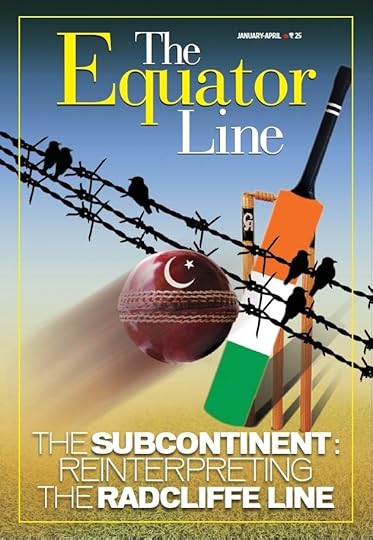


April 1, 2013
Originally posted on shankarkashyap:
Good News!! Just had...
 Originally posted on shankarkashyap:
Originally posted on shankarkashyap:
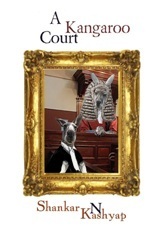 Good News!! Just had two reviews on A Kangaroo Court. One from a professional reviewer on GoodReads and a personal letter from a reader.:
Good News!! Just had two reviews on A Kangaroo Court. One from a professional reviewer on GoodReads and a personal letter from a reader.:
Masquerade Crew?s review
Mar 23, 13
4 of 5 stars
bookshelves: non-fiction
ROY?S REVIEW


Great Reviews for "A Kangaroo Court"!!
 Reblogged from shankarkashyap:
Reblogged from shankarkashyap:

Good News!! Just had two reviews on A Kangaroo Court. One from a professional reviewer on GoodReads and a personal letter from a reader.:
Masquerade Crew's review
Mar 23, 13
4 of 5 stars
bookshelves: non-fiction
ROY'S REVIEW
This is an inside story of one man’s unfortunate experience at the hands of the (British) General Medical Council. it was the misfortune of Mr Shankar Kashyap, eminent consultant surgeon, to become the victim of the GMC’s own disciplinary processes.
January 12, 2013
Originally posted on shankarkashyap:
The first edition of...
 Originally posted on shankarkashyap:
Originally posted on shankarkashyap:
The first edition of The Equator Line lives up to its name. The articles appear to strike a good balance between serious topics such as the current economic problems and the nostalgic journey back in time. The images are striking and appropriately distributed to keep the reader interested and at the same time not losing focus.
I was particularly impressed with the “India:Waiting for a New helmsman” by Bhaskar Roy. He has analysed the bureaucratic woes that beset the country extremely well. The economic assessment of 16th century India and political climate at the time is pretty accurate. The article highlights the dichotomy of economic liberalisation versus continued bureaucratic bottle neck – a legacy of British Raj! It also highlights the absence of any debate on the table about this at present. His correlation of the “head man” of 16th century and the success of the economy should hit the present politicians, if they ever read this article. The analysis of current candidates for the leader of the country shows the grasp of the political mood and characters in the fray extremely well.
I never knew of the numerous success stories of us, Indians abroad until I read “The trophies and triumphs from faraway lands”!! It would be an excellent idea to dedicate one issue on this and get the barons of business in faraway lands write about their experiences. There is a lesson for everyone in this article. It reminded me of a cartoon years ago when the Neil Armstrong landed on the Moon to be greeted by a Chaaiwala!!


A New Journal and A New Wave!!
 Reblogged from shankarkashyap:
Reblogged from shankarkashyap:




The first edition of The Equator Line lives up to its name. The articles appear to strike a good balance between serious topics such as the current economic problems and the nostalgic journey back in time. The images are striking and appropriately distributed to keep the reader interested and at the same time not losing focus.
I was particularly impressed with the “India:Waiting for a New helmsman” by Bhaskar Roy.
October 1, 2012
The Stars and the Harappans
Experts tell us that we can see around 10,000 stars through naked eye. Ancient civilisations looked up at the stars and thought they were Gods or God’s representatives. Almost all the ancient civilisations studied the stars and linked the movements of the stars to what happened here on earth. Mesopotamians and the Egyptians not only recorded the positions of the stars, but also used the stars to design their massive temples and pyramids. The great Pyramids of Giza are related to the position of the Orion constellation. Mesopotamians built their Ziggurats in line with the stars. Mayan Indians designed their temples and pyramids based on the positions of the stars.
Harappans of Indus/Saraswathi valley civilisation were no different. Middle of the third millennium BCE was the golden era of the Harappan Civilization. It stretched from the Hindu Kush Mountains in the west, to the Ganges-Yamuna doab in the east, Himalayas in the north and the Arabian Ocean in the south. The area was over a million square miles and the biggest empire of the time, bigger than Mesopotamian and Egyptian civilisations put together.
The Indus Valley civilisation was at the peak of development in the middle of the third millennium BCE with several large urban centres such as Mohenjodaro, Harappa, Kalibangan, Dholavira and Rupar. The excavations show uniform developments across the area, suggesting area wide communications, exchange of ideas and resources across the vast land. The Harappan seals have been discovered as far away as Mesopotamia and Egypt in the west and in places at the southern tip of Indian subcontinent, suggesting travel and communications over vast distances. This vast civilisation appears to have disappeared around 1900 BCE. There are several theories for their demise.
The composers of the great Vedic scriptures of India have been a mystery so far. There had not been any conclusive proof as to who composed the scriptures or when they were composed. Again, there have been many theories and hypotheses. Generally accepted theory has been that it was composed by invading Aryans from the steppes of Urals around 1600 BCE. This date has been arrived at using literary and philological evidence in the books themselves as well as some astronomical evidence. However, it is becoming clear now that The Vedas and Bramhanas, as well as the Aranyakas, have numerous references to the stars and celestial events such as solar eclipse and lunar eclipse. Use of powerful Load Star Pro software has given the experts a tool to assess the dates of ancient astronomical events accurately.
Though it is considered, that the Star system to be inherently stationary with reference to Solar system, there is an earth wobble occurring at the rate of 26000 years per revolution which makes the star system appear to move slowly with reference to Sun. This has been called Earth’s Precession and was first identified nearly 2000 years ago by Ptolemy and Hipparchus.
The two diagrams above would explain the position of the sun rise at different points in time, in history as well as in the future in relation to the celestial objects. Yet another way of explaining the position of the sun in relation to stars is by looking at the star formations just before sunrise at either spring or autumnal equinox.
The diagrams below illustrate the point – position of the sun in relation to Pisces at 2005 AD, 500 AD and 100 BCE. (Courtesy of Roy Taylor)
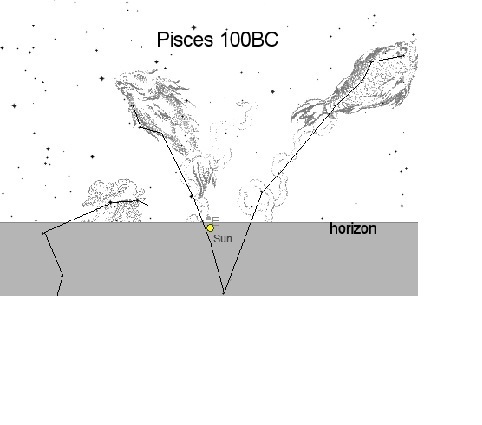
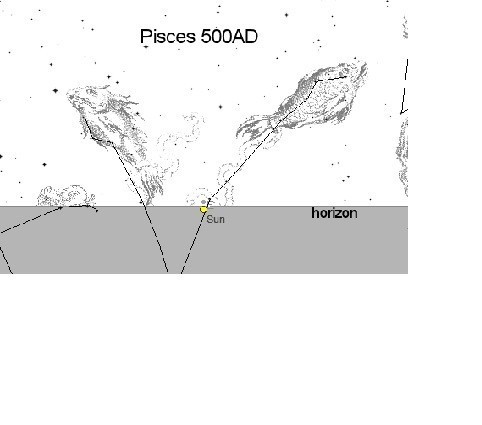
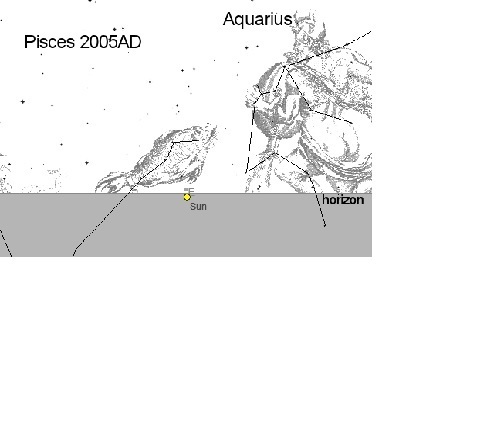 Indian astronomers have used Sanskrit names for the stars – The Pleiades (Krittika), Regulus (Maghaa), Leonis (Phalguni), Mesha (Aries), Vrishabha (Taurus), Mithuna (Gemini), Karkataka (Cancer), Simha (Leo), Kanya (Virgo), Tula (Libra), Vrishchika (Scorpio), Dhanu (Sagittarius), Makara (Capricorn), Kumbha (Aquarius) and Meena (Pisces).
Indian astronomers have used Sanskrit names for the stars – The Pleiades (Krittika), Regulus (Maghaa), Leonis (Phalguni), Mesha (Aries), Vrishabha (Taurus), Mithuna (Gemini), Karkataka (Cancer), Simha (Leo), Kanya (Virgo), Tula (Libra), Vrishchika (Scorpio), Dhanu (Sagittarius), Makara (Capricorn), Kumbha (Aquarius) and Meena (Pisces).
Sage Gargya’s Sooktha tells us that, on spring Equinox day Sun was at Krittika (the Pleiades). The powerful software, Load Star Pro, would place the position of Sun at the Pleiades on March 21, 2400 BC. Sage Gargya refers to Solstice (Ayana) occurring in star Regulus (Maghaa) during his time. Load Star Pro shows us that on 21, June, 2400 BCE, the Sun was at Star Regulus (Maghaa).
The chronology of Indian history and literature prior to the Middle Ages is notoriously uncertain, and attempts to employ archaeoastronomy go back to William Jones who tried to show, based on information gathered from Varaha Mihira, that Parashara Sage lived at 1181 BCE. Jacobi has argued that in the Rigveda and Atharvaveda the sun was in Phalguni (star Leonis), and in the Sankhayana and Gobhila Grhyasutra (both parts of Bramhanas), the Full moon was in Bhadrapada (Andromeda galaxy) during the summer solstice, which would have occurred at 4500-2500 BCE. The Shatapatha Brahmana mentions that the Krttikas (the Pleiades) “do not swerve from the east”. This would have been the case with precision at 2950 BCE
All the cities of Indus Valley Civilisation show an extremely high standard of engineering and mathematical skills not seen in any other contemporary civilisation elsewhere in the world. For example, all the high streets of the large cities such as Harappa and Mohenjodaro were set in major cardinal axes. For such an achievement, a sound knowledge of astronomy and mathematics along with engineering skill was essential. Mathematical texts “written” by eminent sages such a Baudhayana, Apastambha, Manava and Katyana have been placed between 800 BCE and 200 BCE. The dating again is based purely on linguistic evidence comparing with other contemporary texts. Apasthambha described both Pythogarean theorem and Pythogarean triples dating at least 200 years before Pythogaras.
Rig Veda is the oldest of four Vedas – other three being Sama, Yajur and Atharvana. It is organised into ten books or ‘Mandalas’ and consists of 1028 hymns. Numbering of the books is rather arbitrary and again based on linguistics. For example, the first book of the Rigveda in considered much younger than the second. The language of the Vedas was considered archaic’ as long ago as the time of the great grammarian, Panini, who has been dated to have been around the sixth century BCE. David Frawley suggests that the positioning of the vernal equinox in the Vedic scriptures suggest that the authors were from 6000 BCE.
I believe that the stars are giving us enough evidence to show that the Vedic scriptures – the four Vedas, Bramhanas and Aranyakas were written by the Harappans during the third millennium BCE


September 25, 2012
Height of Fashion in Harappa!!
TUSSAR Silk in Harappa!
Tussar silk (also known as Kosa Silk) is produced from Tussar silkworms – Antheraea mylitta and Antheraea proylei, belonging to the moth genus Antherea.
Tussar silk is only produced in India. Majority of Tussar silk is produced in Jharkhand (over 40%). It is also produced in Bihar (Bhagalpur silk), Orissa (Phatachitra) and West Bengal (Kantha). It is also produced to a small scale in Chattisgarh and Madhypradesh.
The earliest silk know to man was in 4000 BCE, in China. But silk thread recorded so far had only been in China in 2700 BCE. Silk has been found in Egyptian mummies dating back to 1050 BCE. The silk came into India with the development of Silk Road somewhere in 2nd century CE. Emperor Justinian introduced silk to the west in 552 CE. Until recently, Bhawalpur Silk was considered the oldest in India – just over 100 years old. It has now come to light that Tussar silk was known to the Harappans about the middle of the third millennium BCE – 4500 years ago! 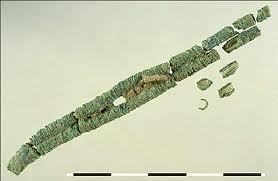 The figure on the left shows a tightly coiled copper wire interspersed with silk from Antherea silk worm. It was a copper necklace found in Harappa.
The figure on the left shows a tightly coiled copper wire interspersed with silk from Antherea silk worm. It was a copper necklace found in Harappa.
The most common fibres used in the Indus Valley appear to have been cotton, but various types of wool and possibly jute or hemp fibres were also used. Most recently, the discovery of silk thread inside copper beads from the site of Harappa indicates that wild silk was also known to Harappans in the third millennium BCE.
Harappans used fine drills to core out semiprecious stones and thread either silk or cotton threads to make a necklace. Even Gold threads have been found used for threading through these stone beads.
It is now official – fashion is more than 5000 years old. There was a time when Tussar silk was considered the height of fashion in 20th century. To all those fashion pundits, it was already fashion in middle of third millennium BCE!!
The girls in this fashion show in Harappa must have worn Tussar silk!!



